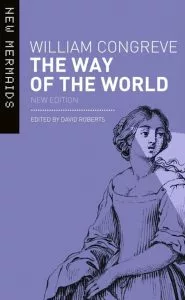Charlotte Bronte’s “Jane Eyre” and “Bertha Mason”: Critical Comparison and Contrast (19th Century Victorian Literature)

Set against the backdrop of Northern England in the early 19th century, Charlotte Bronte’s “Jane Eyre” is a Victorian Literature that chronicles the moral and the spiritual growth of an eponymous heroine Jane Eyre from her childhood days in Gateshead to her married life in Ferndean. Through this novel, Bronte reflected on the psychological and physical conditions of women in the oppressive British patriarchal system and under the clutches of socio-religious rigidities. From a straightforward character analysis, Jane Eyre and Bertha Mason can be viewed sometimes as comparable figures while at other times as completely contrasting figures. For some critics, Bertha Mason is a mere ‘plot device’ in Bronte’s text – a barrier to Jane’s happiness who must be excised from the narrative before closure can be achieved – others have asserted that Bertha may be perceived as Jane’s ‘Dark Double’ because she expresses the internal conflicting voice of Jane which she silently represses and doesn’t express.
Through this article, I intend to objectively examine the contrasting and comparative characteristics of Bertha Mason and Jane Eyre to understand their almost similar patriarchal predicaments within the same social framework and their different ways of tackling such challenges while still retaining their sense of individuality.
PLOTLINE OF THE STORY:
Charlotte Bronte’s protagonist Jane Eyre is characterized as a secluded, powerless orphan of an English clergyman who crosses all social hurdles of life with an extreme determination for achieving the powerful, intellectual and independent woman social status while Bertha Mason is portrayed as an exotic Creole and pampered daughter of a wealthy Jamaican planter who locks herself in the third story of Thornfield Hall, maddens after the excruciating deaths of her father and brothers, and at last, commits suicide for psychologically liberating herself from the continuous pain of loss. Both characters have certain similarities in terms of social circumstances but differences in terms of their criterion while dealing with these situations that are enumerated below:
1. Both Jane and Bertha are physically and psychologically imprisoned at different stages of their lives in different parts of the novel. Jane was forcibly detained in the Red Room by her aunt Mrs. Reed at the age of 13 for quarreling with her cousin while Bertha deliberately entraps her in the third-story of Thornfield when she was psychologically traumatized by her beloved’s death. Jane often uses a language of revolt when discussing her position and feelings such as when she states she behaved “like any rebel slave” and compares her cruel cousin to “a slave-driver”. Jane’s imprisonment in “Red-Room” is symbolic of her negligible social authority in the patriarchal framework while Bertha’s detention in the third story implies the confinement walls of Victorian Marriage. Through these illustrations, Bronte highlighted how the social constraints of women in England are very much identical to slaves who are ensnared in the British colonies, and therefore, the physical imprisonment of Bertha and Jane is not only explored in terms of gender but also colonization.
2. Both Jane and Bertha endeavor to function in a socially acceptable manner within the patriarchal structure while still retaining a sense of individuality but both women are judged and punished severely when they do not conform to societal expectations. For example- Jane strongly resisted against the patriarchal injustices during the disgusting Red-Room incident that she had “endured for nine years . . . could be patient and quiescent under any treatment, and in the tenth break out all fire and violence” but when she re-experienced similar restrictions and controlling factors on her self-identity at Lowood School and Thornfield Hall, she socially conforms to these societal prospects for acknowledging her social survival. Although extremely suppressed by Mr. Rochester, Eyre remained silent and repressed her individuality but when the secret of Bertha Mason was disclosed before her marriage, she non-conforms to her predefined role and escapes from Thornfield thereby welcoming more severe punishments in the future. Similarly, according to Mr. Rochester’s narrative, Bertha Mason who was grown up in the luxuries in childhood had sexual appetites since his adulthood and she never conformed to the traditionally described gender roles as a result of which she became a ” midwife in an attic.” The non-compliance to the traditional gender roles brought tyranny to both the characters but the outcomes of their behavior was diametrically opposite because of their emotional reflex reaction- Jane Eyre socially adapted to certain societal conventions and therefore, she managed to achieve an authoritative position as Mrs. Rochester in the social structure while Bertha Mason’s life ends in complete desperation and disdain due to her reluctance to social conformity.
3. Both Bertha Mason and Jane Eyre are castigated by the elements of patriarchy for restraining the socially described gender roles. For example, Jane Eyre was referred to as ‘a mad cat’ and ‘a bad animal’ when she was being locked into the Red-Room and similarly, Bertha is described with dishonoring epithets like ‘the clothed hyena’, ‘the maniac’ and ‘the lunatic’ when she was revealed because of their non-compliance to their socially-defined duties. However, this castigation seems to impact the former more who managed to attain dignity with the least conformity to societal expectations while the latter ended her life in madness.
On comparative analysis of Jane Eyre and Bertha Mason, it can be noticed that both women have to suffer the adverse consequences for non-reliance to patriarchal social traditions in the Victorian Era and therefore both have similar challenges for adapting to the social structure but their different individual choice and reaction to their social conditions brought different products to them at last. Jane’s physical imprisonment in particular and psychological on broad is manifested through the Red- Room incident while Bertha’s deliberate detention in the third story of her house is the symbol of conscious entrapment in Victorian marriage. Through Bertha’s crazy condition, Bronte intended to clear that if any women decided to marry under unequal circumstances as Bertha did, she will be eventually confined and oppressed by their husbands in the same manner. Sensitized of this secret, Jane denies a marriage proposal of Mr. Rochester because this marital knot will continuously subordinate her. Since Jane Eyre functioned against social expectations to preserve her self-identity and individuality, like Bertha, she also had to suffer the adverse consequences of her resistance to patriarchal compositions.






